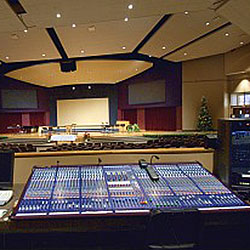From a technical standpoint, the useful life expectancy of the mixing console you purchase this week is six to ten years at best.
Its growing repair costs coupled with improvements in console design will warrant purchasing a replacement unit within that time frame.
It’s also likely that your need for inputs and outputs will have grown beyond the capacity of that console, so it will be time for a change anyway.
There are over 40 manufacturers of consoles. Finding the right one for your needs can be a bewildering search.
Here are six important steps to consider:
• Assess your current worship team needs.
• Project your worship team’s growth needs over at least the next 5 to 8 years.
• Apply a realistic capital budget figure.
• Look for dealers with appropriate solutions who also have the capacity to make timely repairs.
• Do your homework, and then have fun making the purchase.
• Make a capital budget entry now to replace that console in 6 to 10 years at 150% of its current price.
Assessing Your Current Needs
Determining the number of input channels is reasonably straightforward. Consider your usual worship service. You already know from experience that in some auditoriums not all instruments on stage need to be miked in order to be heard.
Your sound system is primarily there to reinforce the acoustic energy already present on stage, so if an instrument can be heard clearly without a mic, you may be able to save the cost of that channel.
Count up the number of vocalists you expect during a typical service, then add the number of musicians who need to be miked. Next, add all the lapel mics you have plus inputs for cassette decks and/or CD players.
Take into account the input needs of your biggest musical event of the year, perhaps your Christmas or Easter musical pageant. That should add up to the maximum number of channels you’ll ever expect to use.
Depending on the scale of your pageants, that could increase your input needs by as much as 30 percent.
Also, get your worship team and sound team together and talk through your production plans for the next five years.
For many churches, that may be a difficult task in itself, but buying a console is a significant expense and it’s definitely worth the time to do this exercise.
Listen carefully to their brainstorming and use that information to make an informed guess regarding how many inputs you think are enough to do the job they’re requesting of you.
Sure, you could supplement the lack of channels on a smaller console by adding an “extra” console for those specific events.
But you may find it less expensive and less complicated in the long run to simply purchase the larger console now.
At this point, you should have a rough idea of the size of console you should be looking for, at least in regards to the number of inputs.




















